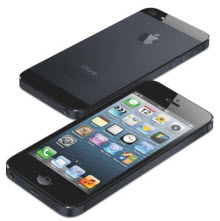Why Apple doesn't need a cheaper iPhone


Smaller iPhone. Larger iPhone. Cheaper iPhone.
I don't know if it's the time or year or the absence of real news, but there's been a flurry of iPhone related rumors over the past few days. The debate over the smaller/larger iPhone has, in my opinion, been answered by the 4-inch screen of the iPhone 5, but speculation that Apple could be working on a cheaper iPhone is interesting. But, can Apple develop a cheaper iPhone and still pull in huge profit margins the company is used to?
The rumor that Apple has a cheaper iPhone in the pipeline started life on DigiTimes, a site that has been patchy with regards to the accuracy of its reporting over the years, but which does seem to have decent supply chain sources. The rumor was then given more credibility when it was later picked up by the Wall Street Journal.
Citing "people briefed on the matter," the Journal suggests that Apple could manufacture a cheaper iPhone by using a shell made of polycarbonate plastic as opposed to aluminum.
Is this really plausible? To try to answer this question, let's take a look at some bill or materials estimates for iOS devices. Let's start by taking a look at the iPhone 5.
According to analytics provider IHS, an iPhone 5 that has an off-contract price tag of $649 costs Apple $207 to make. Based on these figures, the cost of the aluminum case falls under the "Mechanical/Electro-Mechanical" category, which comes to a total of $33. Given that this includes not just the case but cabling and ancillary components, switches, buttons and so on, the cost of the case itself can't be that much.
This means that substituting polycarbonate for aluminum won't shave much off the overall price tag, because it doesn't cost much in the first place. Apple could probably save more money by not including a charger with the iPhone and getting users to charge the device from spare USB ports.
Another suggestion I've seen paraded as a possibility is that Apple could shrink the iPhone, and that this would result in a shrinking of the price tag. Let's take a look at the IHS teardowns for the iPad 3 -- which is close enough to the iPad 4 for our purposes here -- and the iPad mini. A 16GB Wi-Fi iPad 3 which retails for $499 cost Apple $316 to make. Compare this to the 16GB iPad mini, which has a $329 price tag, costs Apple $198 to make.
Put another way, shrinking the iPad from 9.7-inch to 7.9-inch saved Apple $118. A significant saving, partly accomplished by reusing parts such as the processor from other products, but the price tag still means the iPad mini is still a premium brand product.
So, by shrinking the iPhone, and recycling components from earlier devices, Apple could make a cheaper iPhone.
But Apple is already manufacturing -- and selling -- smaller iPhones based on older technology. It's called the iPhone 4, which is free with a service plan, or $450 without, or the iPhone 4S, which is $99 with a service plan, or $549 without.
These older device are already Apple's answer to those who want a smaller, cheaper iPhone.
Given that the iPhone continues to sell really well -- we'll see how good sales were over the last quarter come the next earnings report due January 24 -- it's hard to see a real justification for a cheaper iPhone. A radically cheaper iPhone would undoubtedly cannibalize sales from the higher priced (and higher profit margin) handsets. Analysts are already speculating that the iPad mini is cannibalizing sales of the full-sized iPad, despite the petite tablet being a premium product with a premium price tag.
Throwing a significantly cheaper iPhone into the market could be good for sales, but if Apple tries to boost market share at the expense of profit margins, then it could be interpreted as the Cupertino giant blinking in the face of competition from Android and manufacturers such as Samsung and HTC.
What has happened to the PC market and the associated PC OEMs shows what happens when prices are slashed in favor of market share. This is not a road that Apple wants to start going down.